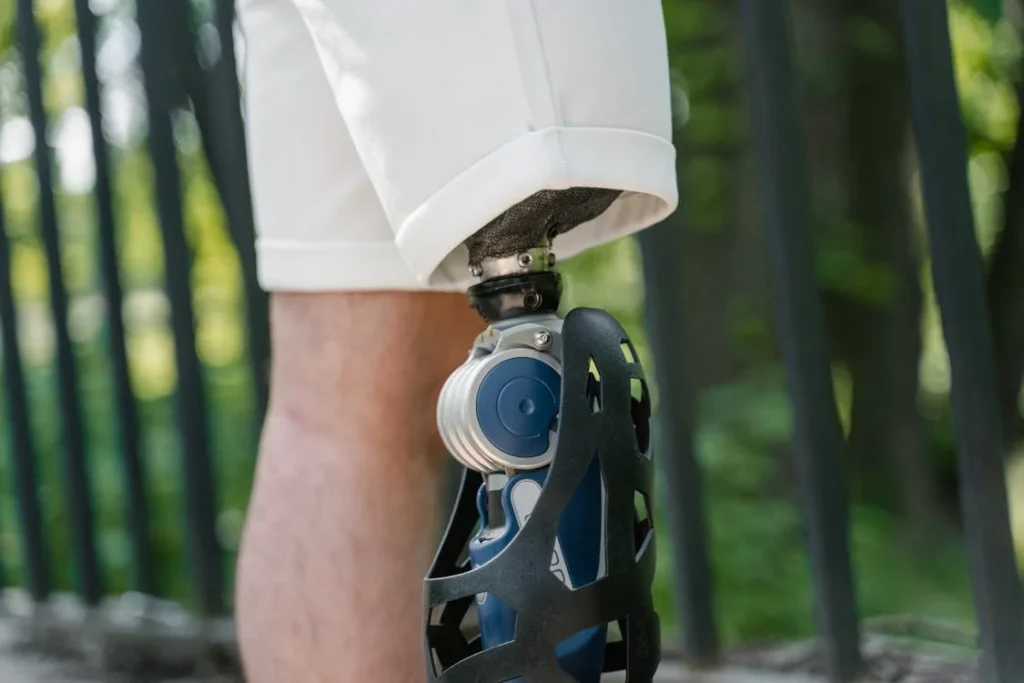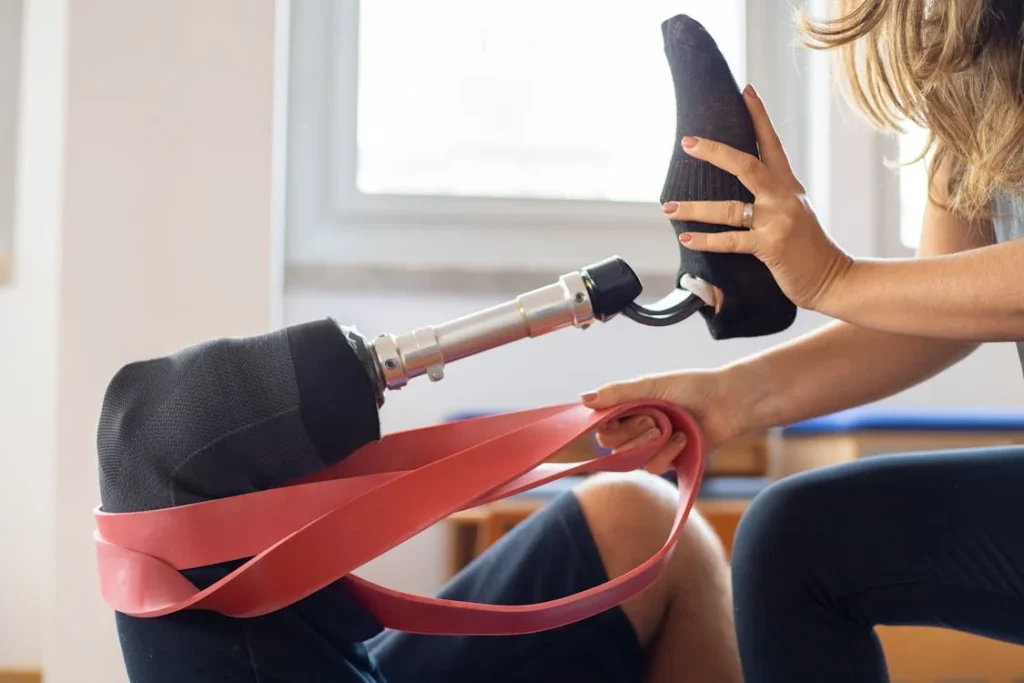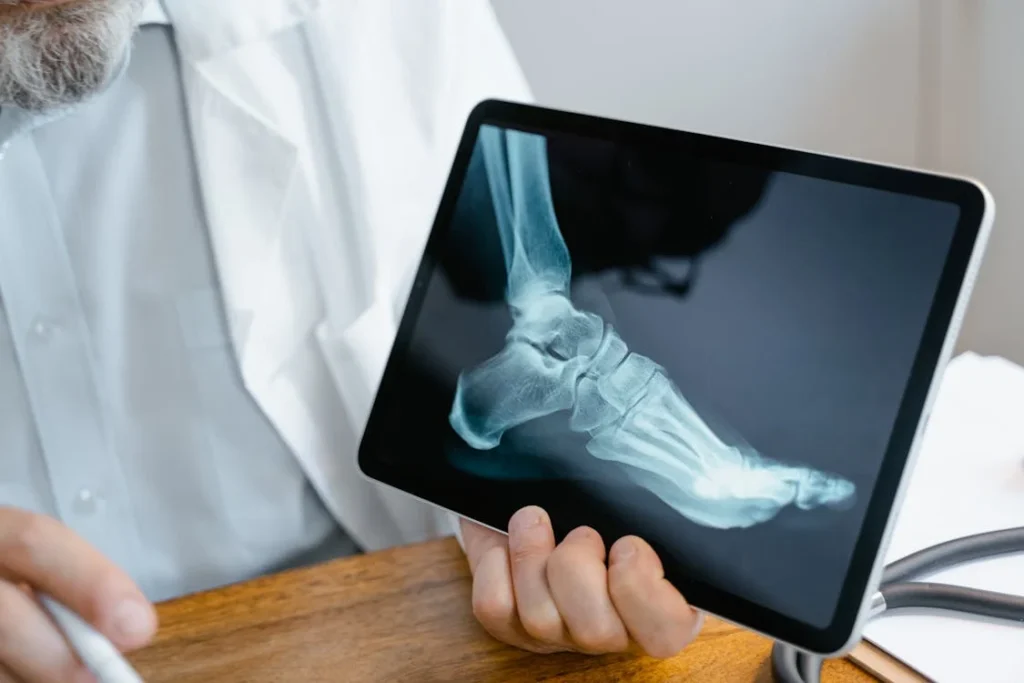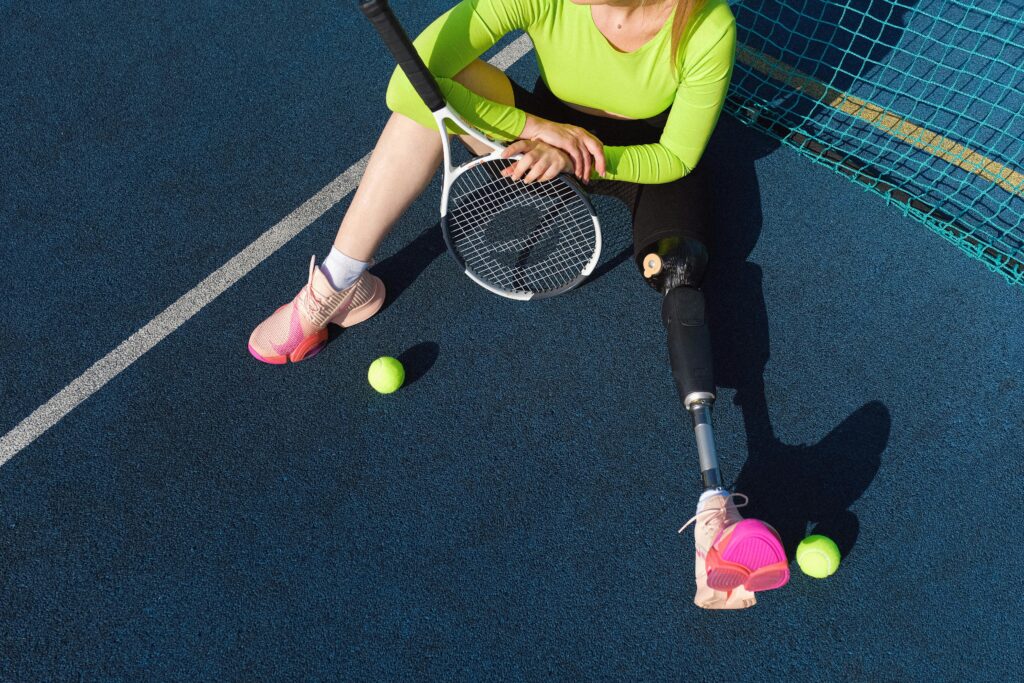Residual limbs change. That’s a fact no one can ignore, whether the limb is healing, adapting, or simply responding to daily life. For anyone who wears a prosthesis, even small changes in limb size can affect comfort, function, and confidence. Some days the socket feels too tight. Other days, it feels loose. These aren’t just minor inconveniences — they can disrupt the entire prosthetic experience.
At Robobionics, we’ve seen how these fluctuations, although common, can cause frustration. Users worry they’re doing something wrong. They feel discomfort, skin irritation, or even pain. In reality, this is just part of living with a residual limb — and managing it well is what makes the difference between surviving and thriving with a prosthesis.

What Are Socket Volume Fluctuations?
Understanding the Basics
Socket volume fluctuations refer to the changes in the size or shape of the residual limb — the part of the body that remains after an amputation — that affect how well the prosthetic socket fits.
One day, the limb might swell slightly and feel snug inside the socket. The next day, it may shrink a bit and feel loose.
These changes can be very small, sometimes just a few millimeters, but even the tiniest difference matters when it comes to comfort and control.
Think of your shoes. If your feet are swollen, your shoes feel tight. If your feet shrink, your shoes feel roomy and awkward.
Now imagine your limb sitting inside a rigid socket for most of the day. There’s no extra room, no stretchy material, no built-in give. That’s why managing these changes becomes so important.
Why Does It Happen?
Residual limbs are made up of soft tissue, muscles, fat, and sometimes bone. All these components react to different things. They respond to movement, temperature, hydration, and even the time of day.
For example, your limb might swell during exercise or in hot weather. It may shrink overnight or after resting for long periods. Blood flow, fluid retention, and tissue compression all play a role.
Even diet and how much water you drink can influence the size of your limb.
Eating salty foods or not drinking enough water can make the body hold on to fluid, which causes swelling. On the other hand, dehydration can make tissues contract.
Another common factor is activity level. If you wear your prosthesis for many hours without breaks, pressure builds up inside the socket.
That pressure can squeeze the limb and push fluid out, making it smaller over time. Once the prosthesis is removed, the limb might swell again, which causes discomfort when you put it back on.
The Healing Process and Limb Maturity
After amputation, the body needs time to heal. During this time, the residual limb is still “settling.” In the first few months, it’s normal to see more noticeable volume changes.
This is because the tissues are still reshaping, the skin is adjusting, and muscles are learning how to work with a new center of gravity.
As healing continues and the limb becomes more stable — what prosthetists call “mature” — the fluctuations become smaller, but they never disappear completely.
Even years after amputation, users still experience daily or seasonal changes. So the goal is never to stop these fluctuations but to understand them and manage them smartly.
Pressure and Circulation
Another key factor is how the socket applies pressure. A well-fitting socket should apply pressure evenly across the limb. If it presses harder in some areas than others, it can slow blood flow.
When that happens, the limb may start to swell after the prosthesis is removed. This cycle of pressure, restricted flow, and rebound swelling is a big part of what causes daily volume shifts.
That’s why the shape of the socket, the materials used inside it, and how it’s worn all affect how the limb behaves. A rigid, unforgiving socket might cause more pressure-related changes than a well-padded or custom-fitted one.
Emotional and Environmental Factors
You might be surprised to learn that stress, sleep, and mood also affect the body — including the residual limb. Stress triggers hormonal changes that can affect blood flow and water retention.
Poor sleep can increase inflammation. Even cold weather can make tissues shrink and tighten, while heat makes them expand.
So, the environment matters. The time of year matters. Your mood and daily routine matter too. That’s why users often notice their prosthesis fits differently during different seasons or after stressful weeks.
Managing these fluctuations starts with awareness. The more you notice what your body is doing — and when — the better you can respond to it. And that’s what we’ll explore in the next section.

How Socket Volume Fluctuations Affect Daily Life
Discomfort That Creeps In Slowly
When the socket doesn’t match the limb’s current volume, it can feel like something just isn’t right. But the discomfort isn’t always sudden or dramatic.
Sometimes, it starts with a bit of tightness in the morning that grows as the day goes on. Other times, there’s a little rubbing at the edges that later turns into soreness or redness.
Because the socket is worn for hours at a time, even small mismatches build up, slowly creating pressure points and areas of irritation.
If the limb has swollen and the socket is now too tight, it can pinch the skin, cut off circulation, or cause numbness.
If the limb has shrunk and the socket is too loose, it can slip or move with every step, leading to instability and chafing. Neither of these situations is good — and both can make it hard to go about a normal day.
Over time, these issues can make users anxious about wearing the prosthesis at all.
They may start avoiding movement, skipping social activities, or feeling more self-conscious in public. What begins as a simple volume change turns into a daily stress.
Loss of Control and Balance
The socket is the bridge between the body and the artificial limb. If that bridge isn’t steady, everything else becomes shaky too.
When volume changes cause the socket to fit loosely, the limb can shift slightly inside the socket. That tiny bit of extra space can throw off balance, affect stride, and make movements feel clumsy or less responsive.
For active users or those with jobs that require walking or standing, this can become a major issue. It may lead to more falls, more fatigue, or even changes in posture.
Some users describe it as “walking with a foot that’s not completely yours.” That sense of disconnection can make a person feel less confident and more guarded in every step.
On the flip side, if the socket is too tight due to swelling, it may feel like the limb is being squeezed.
This reduces muscle movement and restricts natural motion, making the prosthesis feel like a stiff, foreign object rather than an extension of the body.
Skin Breakdown and Long-Term Problems
One of the most serious outcomes of volume fluctuations is skin damage. If the socket continues to rub against the limb due to poor fit, the skin can develop blisters, open wounds, or pressure sores.
These are not only painful — they can also take weeks to heal and may force the user to stop wearing the prosthesis altogether.
If skin issues are ignored or left untreated, they can lead to infections, especially in areas where sweat and moisture collect.
Once infection sets in, medical treatment may be necessary, and in severe cases, users might need to be re-hospitalized or undergo surgery.
At Robobionics, we always stress that early signs matter. A red mark that stays for more than 30 minutes after removing the socket is a warning.
It’s the body’s way of saying, “Something’s not right here.” Listening to these signs early helps avoid bigger problems later.
Emotional Impact and Mental Fatigue
Living with constant socket changes can be emotionally draining. Some users feel like they’re never truly comfortable.
They start each day wondering whether their prosthesis will fit or whether they’ll need to change socks, liners, or even cancel plans. This creates a form of mental fatigue that adds to the physical challenges of limb loss.
Even those who’ve had their prosthesis for years can struggle with this. They may question whether they’ve done something wrong or whether their body is failing them.
The truth is, these fluctuations are normal — but when unmanaged, they can feel like a daily battle.
That’s why education is such an important part of care. When users know what to expect and how to respond, they regain a sense of control.
Instead of feeling at the mercy of their limb, they feel equipped to handle whatever changes come their way.
The Cost of Adjustments and Repairs
Volume fluctuations often lead to more frequent socket adjustments, relining, or even full replacements. This adds up. It can become costly for users, especially those without full insurance coverage.
Time is also a factor — taking off work, traveling to clinics, and waiting for new fittings eats into daily life.
While some of this is unavoidable, a big part of the cost and effort can be reduced with better volume management strategies — something we’ll explore in the next section.
The key is to think ahead, act early, and build habits that keep the limb and socket in sync.

Managing Socket Volume Fluctuations: Daily Strategies That Make a Difference
Start With Awareness
The first step in managing socket volume fluctuations is learning to notice them. Many users go through their day simply reacting to discomfort — tightening straps, taking the prosthesis off, or shifting weight without understanding why it’s happening.
But once you begin paying attention to the conditions around the discomfort, patterns often emerge.
At Robobionics, we encourage users to keep a short daily journal, especially during the first year. It doesn’t have to be complicated.
Just noting the time of day, how the socket felt, and what activity you were doing can help draw a clearer picture of when and why volume changes occur.
This small habit helps users predict and plan for changes. If you know your limb tends to swell after long walks or shrink after sleeping, you can prepare for it. That alone puts you in a position of control.
Mastering Sock Management
One of the most common and effective ways to handle minor volume changes is through sock ply adjustments. Prosthetic socks come in different thicknesses, known as “ply.”
Wearing one thin sock might be perfect in the morning, but by afternoon, you might need to add another ply to fill the space left by a shrinking limb.
It’s important to experiment under the guidance of a prosthetist to find what works best for you.
Some people prefer changing the ply throughout the day, while others keep two or three combinations ready and use what feels right based on comfort.
Over time, this becomes second nature — just like adjusting a belt or tightening shoelaces.
Socks not only manage volume but also protect the skin from direct contact with the socket. That’s why clean socks are essential.
Dirty or sweaty socks can cause irritation, even infections. So we recommend keeping a small stash of fresh socks with you, especially during long days or while traveling.
Staying Hydrated (But Not Overdoing It)
Water intake plays a bigger role than most people realize. When the body is dehydrated, tissues shrink. When you drink enough fluids, tissues stay plump and flexible. That directly affects how your limb fits inside the socket.
However, balance is key. Drinking too much water right before wearing your prosthesis could cause swelling. Not drinking enough leads to shrinking. The goal is steady hydration throughout the day — not sudden spikes.
We often advise users to sip water regularly instead of gulping it all at once. And if you’re on medication that affects fluid retention, make sure your prosthetist knows about it. It might be influencing your socket fit more than you think.
Keep Your Skin Cool and Dry
Sweat is another hidden factor that affects limb volume and comfort. On hot days or during physical activity, the skin under the socket can sweat a lot.
This not only causes slipping and rubbing but also affects how tightly the limb sits in the socket.
Wearing moisture-wicking liners or breathable socket covers helps. These materials pull sweat away from the skin, keeping it dry and reducing the risk of irritation.
If you sweat a lot, consider using a fan or cold pack before putting on your prosthesis to cool the limb slightly. But avoid putting cold directly on the skin for long periods — a short cool-down is enough to stabilize tissues.
For those living in humid areas or with naturally sweaty skin, applying a light, prosthesis-safe anti-perspirant (if advised by your prosthetist) the night before can help reduce sweat production the next day.
Watch for Signs of Poor Fit
Volume changes don’t always announce themselves clearly. Sometimes, the only clues are in how you move. If your prosthetic limb feels slower, heavier, or unsteady, it could mean your socket fit has changed.
If the prosthesis makes new noises — like clicking or squeaking — or if you feel rubbing where you didn’t before, your limb may have shifted inside the socket.
Other signs include your limb rotating inside the socket, pressure marks that last too long, or discomfort after wearing the limb for only a short time.
These are all early warning signs. They don’t mean you’ve done anything wrong — just that your socket and limb are out of sync for the moment.
The best action here is to stop, adjust your sock ply, and re-evaluate. If the issue continues, schedule a visit with your prosthetist.
A quick liner change, socket modification, or fitting tweak might fix the issue before it becomes a bigger problem.
Use Liners and Suspension Systems Wisely
Some users benefit greatly from liners that have slight flexibility. These liners create a soft layer between the limb and the socket, which helps accommodate small daily changes in size.
However, liners also compress soft tissue, which can cause volume reduction over time. It’s a balance.
If your socket uses suction or vacuum suspension, volume control becomes even more critical. These systems rely on tight seals to function.
If your limb shrinks too much during the day, the seal may break. That can cause sudden detachment or instability, especially while walking or sitting down.
In these cases, sock adjustments or liner swaps may need to be more frequent. Always carry what you need to make small changes on the go — whether that’s a fresh liner, spare socks, or a cleaner to wipe away sweat and reapply the suspension.

Clinical Interventions and Long-Term Solutions
When to Involve Your Prosthetist
While daily management with socks, liners, and hydration can go a long way, there are times when professional help is the smartest move. If adjustments stop working, if the limb begins to feel painful, or if skin issues keep returning, it’s time to see your prosthetist.
You shouldn’t have to “tough it out” or wait for things to get worse — early intervention almost always leads to better results and fewer complications.
A prosthetist will examine your limb, check the socket, ask about your routines, and often spot things you may have missed. Maybe the socket has warped slightly. Maybe your walking pattern has changed.
Or maybe your limb has matured and needs a whole new design. You might only need a small reline, or you might need to rebuild the socket from scratch. Either way, your comfort and mobility will improve when you act early.
At Robobionics, we encourage all users to treat their prosthetist as a long-term partner, not a one-time provider. That ongoing relationship is the key to staying ahead of changes.
Socket Relining: A Quick Fix with Big Impact
One of the most common clinical solutions for volume changes is socket relining. This involves adding a soft or firm inner layer inside the existing socket to improve fit.
Think of it like adding an insole to your shoe — it helps fill the space and realigns how your body connects with the socket.
Relines are usually done in a single visit and can make an old socket feel like new again.
They’re ideal for situations where the limb has shrunk just enough to make things uncomfortable but not so much that a whole new socket is needed.
Soft relines work well for sensitive skin or short-term adjustments, while firmer relines offer better structure for active users.
Either way, the process is safe, affordable, and highly effective — especially when the changes are still small.
Recasting for a New Socket
Sometimes, the limb changes too much for a simple reline. This is especially common after significant weight loss or gain, major health events, or the end of the early post-amputation healing phase. When that happens, it’s time for a new socket.
Recasting involves taking fresh measurements or scans of the residual limb. In many modern clinics, 3D scanning has replaced old plaster molds. It’s quick, accurate, and more comfortable.
Once the new data is captured, your prosthetist uses it to create a socket that matches your limb exactly — accounting for all new contours, volume changes, and pressure zones.
While getting a new socket may sound like a big step, it’s actually a very positive one.
It means your body has stabilized or evolved, and you’re now ready for a better fit that supports your current lifestyle. Most users report a huge increase in comfort, balance, and confidence once the new socket is in place.
Adjustable and Modular Socket Designs
In recent years, technology has made it possible to create adjustable sockets that respond to daily volume changes with minimal effort.
These sockets may have dials, straps, or panels that can be tightened or loosened depending on the fit required that day.
At Robobionics, we’ve seen great success with modular socket systems, especially for users in high-humidity or high-activity environments. These systems are built to adapt.
They allow users to change parts of the socket — like the liner or suspension system — without replacing the entire device. This flexibility not only saves money but also reduces time spent on fittings.
More importantly, adjustable designs put users back in control. Instead of waiting for problems to appear, they can respond in real time and enjoy consistent performance, no matter how their body changes from day to day.
Long-Term Monitoring and Digital Records
Another growing trend is the use of digital records and limb health monitoring over time. With tools like limb scanners, pressure sensors, and AI-powered fit prediction, clinics are able to track how a user’s limb changes over months and even years.
This information becomes part of your health file. The next time you come in, your prosthetist can compare current measurements with past data to spot trends, identify recurring issues, and build smarter solutions.
In some cases, these tools can even alert the clinic when an issue is likely to appear, allowing them to reach out before the user experiences discomfort.
This proactive approach means fewer emergencies, fewer missed days of work or school, and a smoother overall experience for everyone involved.
Custom Liner Solutions
For some users, especially those with very irregular limb shapes or sensitive skin, custom liners are a great option. These liners are molded to the exact shape of the residual limb and offer a snug, consistent fit inside the socket.
Because they match the user’s anatomy so closely, custom liners help reduce the impact of minor volume fluctuations.
They also improve suspension and reduce friction, which is ideal for people who deal with frequent irritation or skin problems.
They may cost more than standard liners, but for users who have struggled with fit for years, the investment often pays off in quality of life.

Planning Ahead: Building a Sustainable Routine for Volume Management
Building Habits That Support Consistency
Living with a prosthetic socket is not about chasing perfection. It’s about building routines that make life smoother, more predictable, and less stressful.
The users who succeed long-term aren’t the ones who never experience volume changes — they’re the ones who notice the changes early and respond before discomfort sets in.
Small daily habits, like checking the skin during each removal, swapping socks when something feels off, and keeping the limb cool and moisturized, go a long way.
These are not complicated actions — but they add up. They build body awareness. And over time, they reduce surprises.
Keeping open communication with your prosthetist also makes a difference. Don’t wait for things to break down.
Schedule check-ins, even when everything seems fine. These visits allow for early detection of issues and give you peace of mind that you’re on the right track.
Involving Family and Caregivers
For those who rely on caregivers or family support, education is vital. The more people around you understand volume changes, the easier it is to respond quickly.
Parents, spouses, or helpers should learn how to check for signs of poor fit, how to apply socks correctly, and how to clean and inspect liners.
When caregivers are involved and confident, users feel safer and more supported. They’re also more likely to stick to a consistent routine, knowing they don’t have to manage everything alone.
Using Technology to Your Advantage
Technology has made volume management smarter. From mobile apps that track wear time and comfort, to digital reminders to change socks or hydrate, there are now tools to keep your limb and socket in sync with your daily routine.
Even something as simple as setting a calendar reminder for a hydration break or a quick skin check can reduce long-term problems.
And with clinics like Robobionics using digital scanning and fit analysis, future visits are faster, more accurate, and more personalized than ever before.
As tools continue to evolve, so will the way we manage limb health. The future of socket care is not just reactive — it’s proactive, predictive, and deeply personal.

Conclusion
Socket volume fluctuations are part of life with a prosthesis. They’re natural, expected, and manageable. What matters most is not avoiding them, but learning how to respond — with calm, knowledge, and simple daily action.
From soft socks to smart sensors, and from hydration to high-tech liners, the tools are here. And at Robobionics, we believe every user deserves to feel confident, stable, and in control of their journey. Managing limb size changes doesn’t have to be a struggle. With the right support and habits, it becomes just another part of living well — one step at a time.
Whether you’re a long-time prosthesis user or just starting out, remember: every day is a chance to feel better in your socket. And you’re never alone in that journey.



